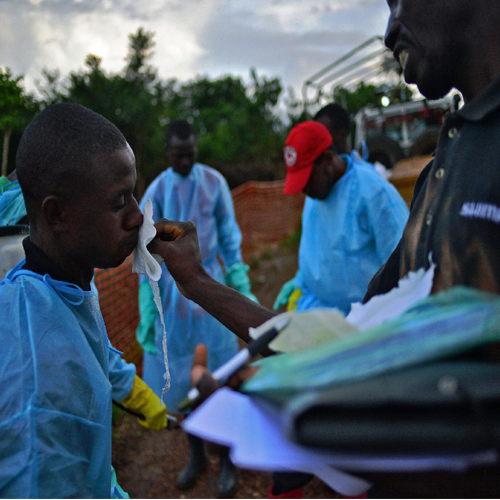
cause of death



Table 4: The Cause of Death in 124 of the Cases:
| Causes | No.of Deaths | Percentage |
| Kaposi Sarcoma | 36 | 29 |
| Gastroenteritis | 24 | 19.4 |
| CNS/Meningitis/Tumor | 16 | 12.9 |
| Iopathic | 14 | 11.3 |
| Septoceamia | 12 | 9.7 |
| Tuberculosis | 8 | 6.5 |
| Malaria | 8 | 6.5 |
| Pneumonia | 4 | 3.2 |
| Others | 2 | 1.5 |
| Total | 124 | 100% |
We established that the severe weight loss, which is the wasting syndrome in the majority of our cases, was precipitated by diarrhoea, loss of appetite, and candidiasis in the gastrointestinal tract. Further investigations on the cases with diarrhoea revealed the bacteria in Table 3 to be mainly responsible for the diarrhoea. Twelve of the cases treated had diabetes mellitus as part of their AIDS-related complex, requiring medication. In all these cases. the symptoms and signs of diabetes gradually reduced and had their diabetes controlled when on Mariandina A treatment within a period ranging between four to eight months and afterwards requiring no more hypoglycemic drugs. The continued monitoring of these cases has not yet revealed any recurrence of the symptoms and signs of the diabetes so far. After 2 years, no insulin has been required.
Skin Rashes – Responded in most cases to specific treatment because sensitivity tests indicated staff. aureus sensitive to gentamicin and erythromycin.
Deaths – The deaths were 124 out of 1366 patients treated in 24 months at the Mariandina clinic between August 1992 and August 1994.
Kaposi Sarcoma was the commonest cause of death and was suspected in some of the gastroenteritis and idiopathic cases that failed to respond to therapy. Lesions were generally observed clinically in the palate, skin of legs, trunk and arms respectively.
Gastrointestinal haemorrhage — when it occurred — was suspected to be related to Kaposi in the G.I.T.